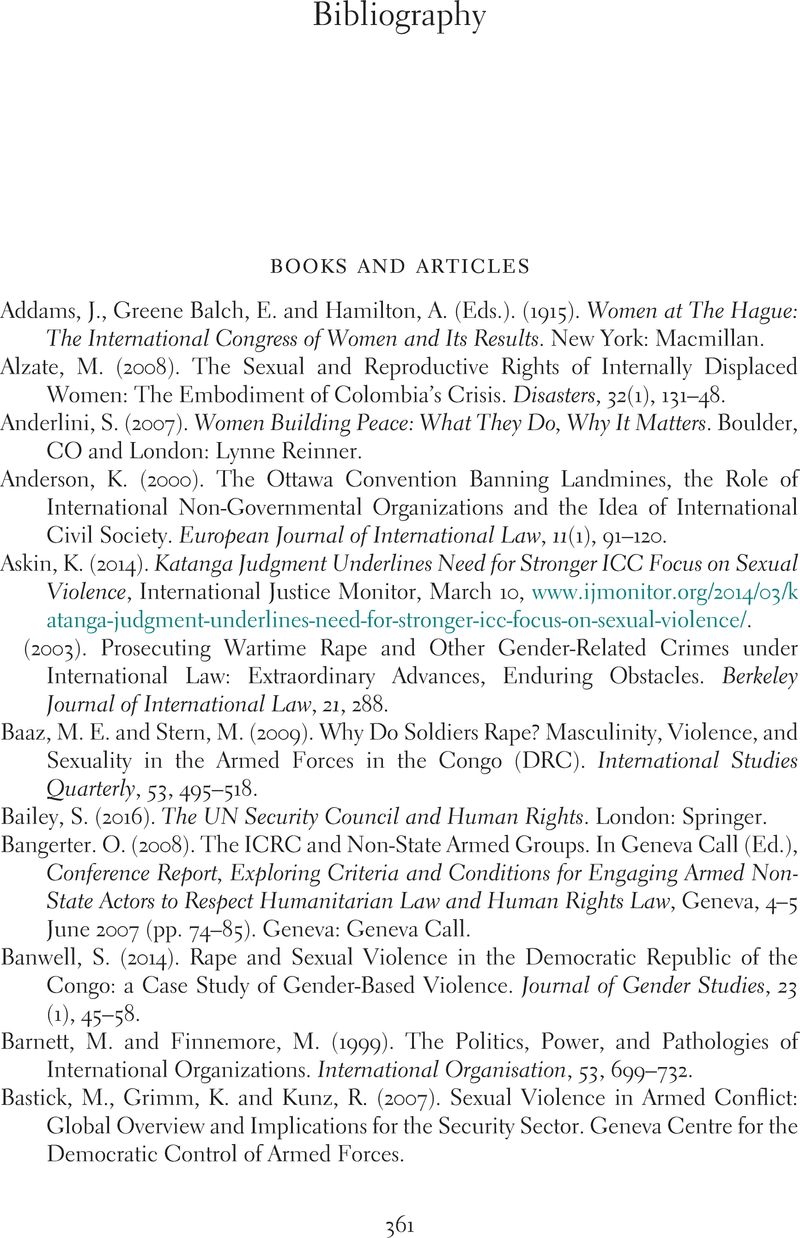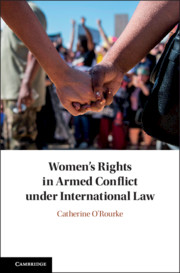Book contents
- Women’s Rights in Armed Conflict under International Law
- Women’s Rights in Armed Conflict under International Law
- Copyright page
- Dedication
- Contents
- Acknowledgements
- Tables
- Table of Treaties
- Table of Cases and Communications
- Abbreviations
- Part I Legal and Conceptual Framework
- Part II Case Studies
- Part III Looking Forward
- Bibliography
- Index
- References
Bibliography
Published online by Cambridge University Press: 10 October 2020
- Women’s Rights in Armed Conflict under International Law
- Women’s Rights in Armed Conflict under International Law
- Copyright page
- Dedication
- Contents
- Acknowledgements
- Tables
- Table of Treaties
- Table of Cases and Communications
- Abbreviations
- Part I Legal and Conceptual Framework
- Part II Case Studies
- Part III Looking Forward
- Bibliography
- Index
- References
Summary

- Type
- Chapter
- Information
- Women's Rights in Armed Conflict under International Law , pp. 361 - 385Publisher: Cambridge University PressPrint publication year: 2020



